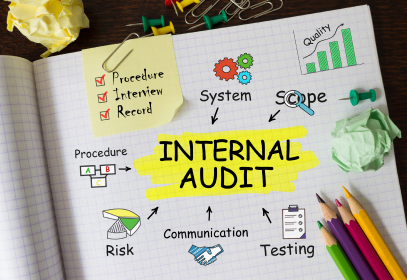
Episode #5: Software Solutions for Internal Audits
Episode #5: Software Solutions for Internal Audits
Internal Audits
When we look at the role software plays in auditing in the fifth episode of Kellerman Consulting’s internal audit video series, we are going to be focusing on audit method, since this is where software provides the biggest benefit, as well as the biggest challenges.
Where software is most helpful for internal auditing is through its ability to provide an interactive audit template to work off of. Software solutions have libraries of internal audits uploaded by other users, professionally created audits as starting point as well as audits designed to meet certification standards.
That means for organizations conducting ISO audit against 9001 or other ISO standard, or GFSI for food facilities, many software solutions have ready-made checklists with those standards already loaded. Better still, software allows clear identification of the auditor and areas under audit, as well as pictures and document uploads and scheduling of corrective action. This can allow for efficient information gathering and clear record keeping during the audit.
For a facility that already has experienced auditors and a commitment to auditing, adding software may very well be the last step needed for running successful audits.
As we survey the limitations and issues that can be presented with audit software, we have to return to the concepts of choosing the right person to run the audit, as well as scheduling the audit, neither of which are solved by selecting the software itself.
For organizations lacking in management and leadership commitment to auditing, or where the organization does not have a person properly trained to audit, purchasing software will not by itself lead to a successful outcome.
Additionally, for organizations that are not accustomed to using database software as part of operations, using, storing and securing tablets or portable laptops and then integrating and uploading information may not be feasible.
Lastly, many of the internal audit software companies operate as a software as a service, or Saas, and most of the entities require ongoing subscriptions for the use of the software and templates, and this additional cost must be budgeted into the cost of auditing.
One additional limitation to consider with using software is that each organization is unique in many regards, and audit checklist tools do require some customization to be usable. The time it takes to go through pre-made audit templates can take as much or more time than making an audit checklist from scratch, and even if a decent match is found, many audit questions might not be applicable, therefore the audit checklist may be more appropriate.
When we weigh the pros and cons of software, it is clear that using software as a part of the audit process is a very good choice where it is a good fit, and we encourage organizations to strongly consider adding an audit software solution if feasible.
To make sure that software is part of a successful audit, we recommend a qualified person or team is in place and properly trained prior to purchasing software, and we also strongly recommend a software solution if your organization is internal auditing to a recognized ISO or other quality management system or a GFSI food safety management system.
For facilities that are not internal auditing against a standard, audit questions and methods should be established prior to selecting software, and software that is easy to customize should be selected.
In our final episode of the Internal Auditing series, we’ll discuss the Internal Audit requirements in the ISO Quality Management System as well as GFSI schemes for food facilities. These GFSI schemes include SQF, BRCGS, FSSC 22000, and PrimusGFS.
Thank you for watching. For free downloads to accompany this video series, visit the free training videos & resources page of our website.
Subscribe to our YouTube channel or follow us on LinkedIn to be notified of new educational food safety resources.







